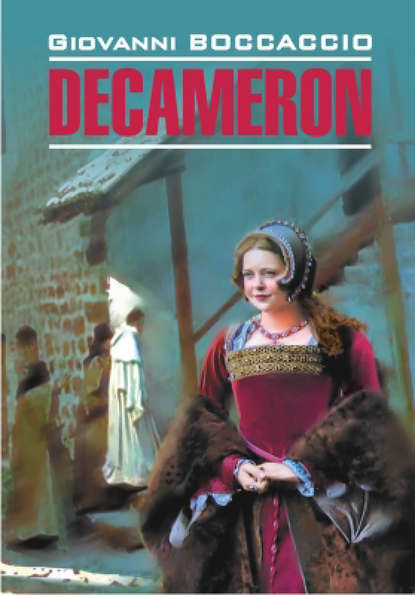
Полная версия
Останься, дочь / Stay, Daughter
Nestling in folds of white voile were dozens of glass bangles: red, blue, green, yellow, even gold; some multicolored, some striped diagonally over the narrow bands, others with shiny specks inside the glass. They glinted in the light. With just two bangles on her wrist, a girl could make a delicate, tinkling sound.
Marmee turned to her mother.
Wappumma shook her head. “The glass will break when you do your housework; and where else could you wear them? Where do you go child, that anyone would see?”
Marmee bit her lip and said nothing.
But Wappah walked up to Majeed Nana’s box and picked up a pair of bangles. He said if it made his sister happy, he would buy them for her.
The next morning, after her son had left the house, the widowed mother placed the crossbar against the front door and closed it shut.
Chapter II
Let not the believers take the disbelievers as Friends.
The Quran, 3:28Because it was the custom among our people that when a man married he moved into his wife’s home, our family lived in the Galle Fort, where Umma had been born.
After some years as a jeweler’s apprentice, Wappah had struck out on his own and become wealthy enough to be considered an eligible bridegroom for a daughter of the prestigious Cassim clan, to which Umma belonged. Marriages like that took place when a Fort family could find no one amongst themselves for a girl who was unmarried and growing old. No one ever explained why Umma, who everyone considered beautiful and elegant, had not been able to marry earlier. I couldn’t really ask, that being another unnecessary question, but I suspect it had something to do with the decline of family fortunes – the decline that often happened to the subsequent generations of wealthy families. Where no big dowries could be offered, people who were otherwise keen to be set apart from those who lived in the villages allowed themselves to consider an up-and-coming bachelor from a place like Shollai.
The Galle Fort, this place where I grew up, was like no other. Or so the Ulemas, the religious scholars of Islam, must have concluded with great consternation. They insisted the faithful keep away from the infidel; inside this cramped citadel, no one could keep very much away from anybody else.
Perched on a cliff that jutted out into the sea, the fortress was a small outcrop of land surrounded on three sides by water. Inside, within an area that was less than a tenth of a square mile, lived hundreds of people. With roofs and gutters touching, and only a common wall in between, their houses jostled against each other. To talk to a neighbor, a person stood in his courtyard and shouted over a wall, or sat on the steps of the front verandah and pitched his voice across.
The back doors opened out to narrow alleyways, giving cover to Muslim women who wanted to visit their relatives without walking the streets. They also opened out to minuscule pieces of land that families used for raising livestock. Here, a neighbor’s goat wandered over to chew on sprigs of jak leaves brought from the countryside, and a neighbor’s ducks waddled in to splash in mud puddles left behind by monsoon rains. The smells from adjoining kitchens mingled and wafted in the breeze and into this mix was added, every day, another odor, when the bucket man from the municipality opened a latched door at the back, and emptied into his handcart the brimming pails that he pulled out from the latrines.
My mother’s uncle, Zain Magdon insisted that the first Muslim allowed to live inside this citadel was one of our own ancestors. Nearly two centuries ago, his great-great grandmother, Raheema Umma, a widow with seven daughters (all of them very beautiful, Zain Marma also insisted), had lived in Magalle, a small town a few miles south of the Fort. Some hooligans who knew about the pretty girls began to harass the family, and one night, the notorious bandit Kitchel, who worked with the fearsome robber Gurubaldi (so Zain Marma’s story went), broke into the house to abduct them. Though the cries of the women brought out the neighbors and the widow and her daughters were saved, the next morning, the terrified mother appealed to the colonial authorities to give her a safe place to live.
At the time, there was a Dutch law that restricted Muslims – whom the colonizers called Moors – to their own enclaves in the country, but in 1774, Raheema Umma was allowed to move to the safety of the Fort with its army barracks and impregnable walls.
Not everyone in the Fort was willing to accept that it was someone in Uncle Zain’s family who had been the first to move there – such distinctions were only grudgingly conceded. But when challenged, Uncle Zain whipped out the evidence: Dutch Governor Willem Jacob Van der Graff’s census of 1789 did have an entry for a Moor widow with seven daughters living in the Fort; and the name of the widow was recorded as Raheema Umma.
When this great-grandmother, several times removed, first settled into a house on Church Cross Street, she lived, a lone Muslim, among Christian Burghers – the middle-class traders from Holland whom the Dutch had encouraged to migrate to their Asian colonies. After the British repealed, in 1832, the law that restricted the rights of the Moors to live where they wanted, more of them migrated into the Galle Fort. Traders by profession, they appreciated the advantages of living near what was then the country’s principal harbor. Eventually, a large community of Muslims came to live inside this fortress, among the descendants of the white-skinned people who had colonized Ceylon. We called them Parangis, from the Arabic Ferengi for Frankish crusaders.
“Grandfather Rohani Cassim spent so much time with the Parangis,” Kaneema Marmee told me, “people began to talk.”
Kaneema Marmee was the oldest of a group of relatives who regularly got together to chat over afternoon tea. The daughter of my mother’s paternal aunt, Thalha, she was Umma’s first cousin. Nearly every day, they gathered at our house on Lighthouse Street in the Galle Fort, to sit by our spacious courtyard and be cooled by the gentle sea breeze. The savory pastries and sweet confections our cook laid out, made it even more of a favorite venue.
“What were they saying about your grandfather?” I asked Kaneema Marmee. Someone had lain themselves open to almost the very worst thing that could happen to a person – have people talk about them. Someone in my own family, no less. Had this person not cared? I felt a thrilling shudder just considering the possibility of such boldness.
“They complained that he was spending too much time with the Marshazi.”
The Marshazi were ‘others’—maru in Tamil, meaning different and shazi meaning group, or type. The Parangis who were Christian naturally fell into that group. They were people unlike us – infidels from whom, the Ulemas warned, we were to stay away.
“Didn’t other people do that?” I searched my aunt’s face as she took a bite from a crisp pastry.
“Not the way he did.”
Great-grandfather Rohani Cassim, I learned, was not like most other Muslim men of his time who worked as local tradesmen dealing in gems, hardware and cloth. He was a ship chandler who sold coal, oil, rope and other supplies to the foreign vessels that berthed in Galle. In the middle of the nineteenth century, when he began his business, this harbor in the south of the island was a port of call for hundreds of steamers, mail boats, and military vessels. Travelers from all over the world disembarked from visiting ships, and with a regularity its residents came to expect, the narrow streets of the Fort teemed with Europeans in white morning dress. Many of them, directly or indirectly, were Rohani Cassim’s customers.
Конец ознакомительного фрагмента.
Текст предоставлен ООО «ЛитРес».
Прочитайте эту книгу целиком, купив полную легальную версию на ЛитРес.
Безопасно оплатить книгу можно банковской картой Visa, MasterCard, Maestro, со счета мобильного телефона, с платежного терминала, в салоне МТС или Связной, через PayPal, WebMoney, Яндекс.Деньги, QIWI Кошелек, бонусными картами или другим удобным Вам способом.




